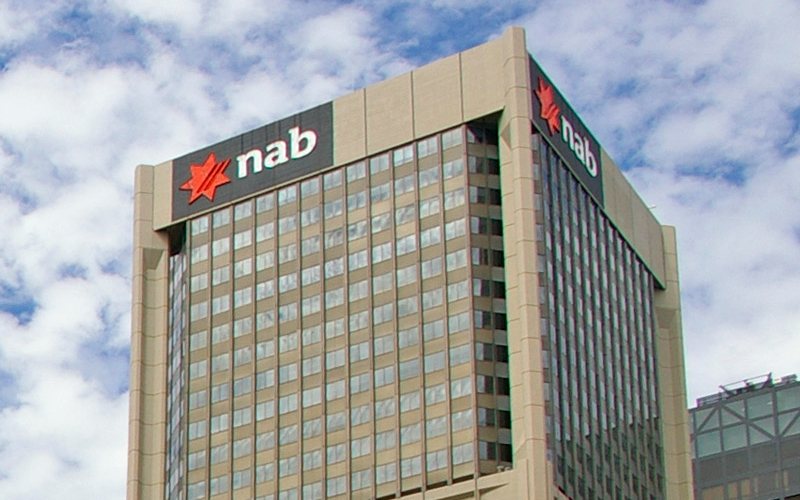Almost a quarter in the survey of 2,000 are considering leaving their current jobs, with around three in 10 planning to find work in a new industry.
Of those contemplating taking the leap, more than one in three said COVID-19 has had a big impact on their decision.
Turnover was greatest for general unskilled workers with almost four in 10 (37%) having changed jobs in the past year.
This was followed by labourers (29%) and other IT and tech workers (28%).
NAB Executive for Business Bank Julie Rynski said many Australians are looking for a fresh start.
"Clearly the pandemic has shifted the expectations of Australian workers and this research suggests employers now need to work harder to retain talent," Ms Rynski said.
"We’re seeing so many businesses get creative about how they provide a sense of purpose at work and provide clear career pathways to ensure long term team engagement."
Three in 10 workers said they were being 'pushed away' from their jobs by a lack of personal fulfillment and meaning (30%); lack of career growth (29%); their job's impact on their mental health (29%); and poor pay and benefits (27%).
Other key drivers to quit included poor work-life balance (23%); burnout (22%); and feeling like a fresh start (20%).
"There are a number of theories why the 'Great Resignation' might be happening but a heightened sense of mortality and burnout due to extra work particularly among frontline 'essential' workers is certainly high on the list," Ms Rynski said.
"A strong rebound in the labour market is also giving people confidence they will find another job if they make the jump."
NAB's research comes after the 'unusually low' levels of employee turnover in Australia.
The latest data from the Australian Bureau of Statistics (ABS) for the year to February 2021 showed Australia experienced the 'lowest' employee turnover on record of 7.5%, down from a peak of 19.5% in 1988-89.
Unemployment data released yesterday by the ABS revealed the labour market remained steady at 4.2% in January.
Asia-Pacific economist at global job site Indeed Callam Pickering said forward-looking measures suggest the labour market is "only going to tighten further".
"The current tightness in the labour market coupled with strong forward looking indicators of labour demand point to an acceleration in wages growth that would be stronger than the RBA’s expectations," Mr Pickering said.
Not pushing through to wages growth
In the United States and the United Kingdom, people quitting their jobs or exiting the labour force has pushed wages up considerably more than in Australia.
The last Australian wages growth data released was for the September quarter, which showed an annualised 2.2% rise in wages growth.
RBA board members noted labour supply dynamics were different in Australia compared to the US and UK.
"Wages growth had picked up most sharply in the United States and the United Kingdom, where labour demand had been strong but participation rates had still been well below pre-pandemic levels," RBA board meeting minutes read.
"By contrast, wages growth had remained subdued in a number of countries where unemployment rates had been low but labour supply had largely recovered, including in the euro area, Canada and Australia."
ANZ bank's head of Australian economics David Plank said the RBA may not have the wages data "it is looking for" until September.
Westpac's director of institutional banking Tim Riddell said wages growth remains "modest" and will be some time before it's consistent with inflation.
The next wages growth data - for the December 2021 quarter - will be released by the ABS on 23 February.
Advertisement
Need somewhere to store cash and earn interest? The table below features savings accounts with some of the highest interest rates on the market.
| Bank | Savings Account | Base Interest Rate | Max Interest Rate | Total Interest Earned | Introductory Term | Minimum Amount | Maximum Amount | Linked Account Required | Minimum Monthly Deposit | Minimum Opening Deposit | Account Keeping Fee | ATM Access | Joint Application | Tags | Row Tags | Features | Link | Compare | Promoted Product | Disclosure |
|---|---|---|---|---|---|---|---|---|---|---|---|---|---|---|---|---|---|---|---|---|
0.05% p.a. Bonus rate of 5.35% Rate varies on savings amount. | 5.40% p.a. | $1,107 | – | $0 | $99,999 | $1,000 | $0 | $0 |
| Promoted | Disclosure | |||||||||
4.00% p.a. | 5.45% p.a. Intro rate for 4 months then 4.00% p.a. | $905 | 4 months | $0 | $249,999 | $0 | $1 | $0 |
| Promoted | Disclosure | |||||||||
0.00% p.a. Bonus rate of 5.10% Rate varies on savings amount. | 5.10% p.a. | $1,044 | – | $0 | $99,999 | $0 | $0 | $0 |
| Promoted | Disclosure | |||||||||
4.75% p.a. | 5.10% p.a. Intro rate for 4 months then 4.75% p.a. | $984 | 4 months | $0 | $99,999,999 | $0 | $0 | $0 | Disclosure |
Photo by Andrea Piacquadio from Pexels

Ready, Set, Buy!
Learn everything you need to know about buying property – from choosing the right property and home loan, to the purchasing process, tips to save money and more!
With bonus Q&A sheet and Crossword!







 Harrison Astbury
Harrison Astbury
 William Jolly
William Jolly
